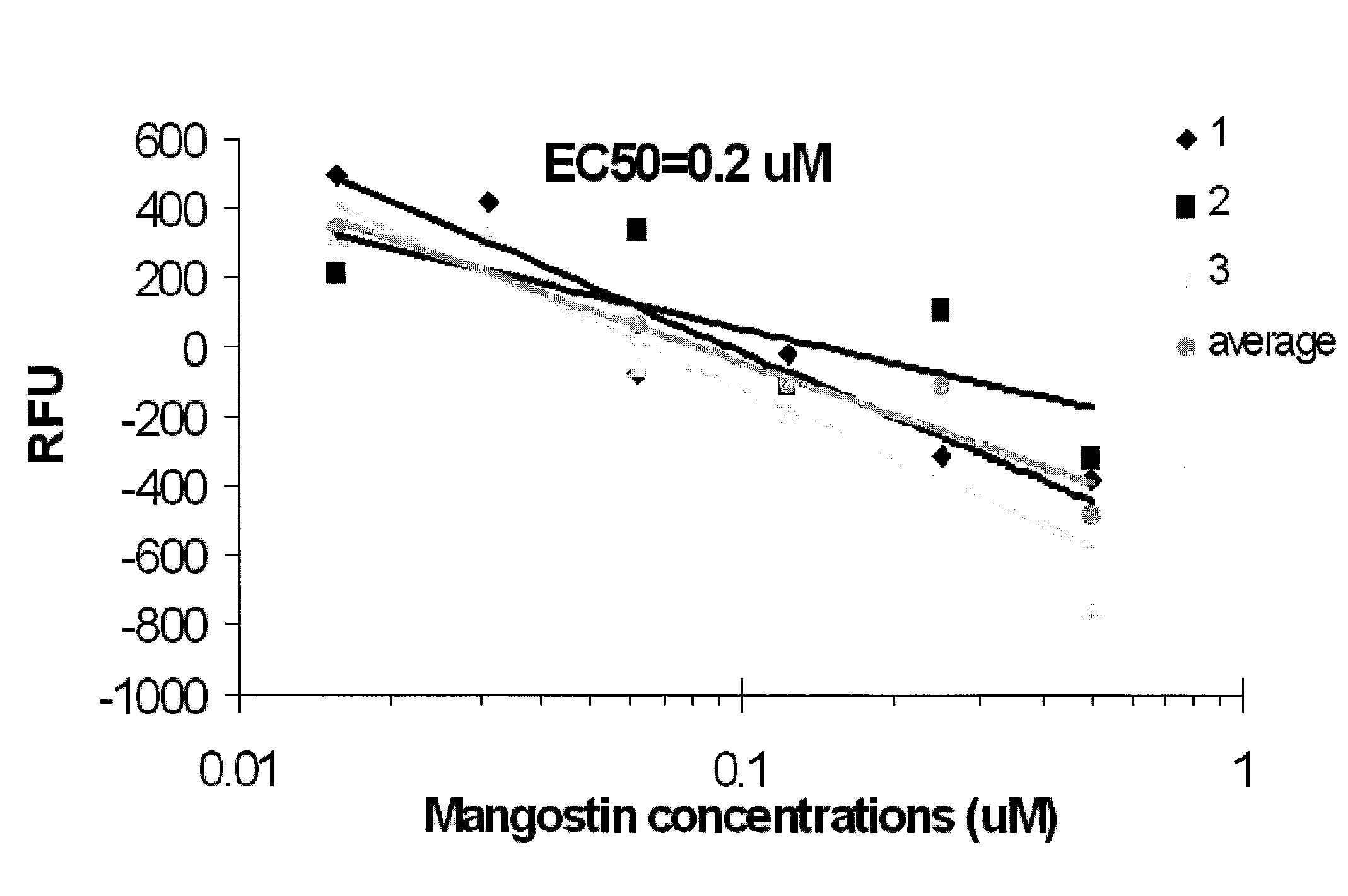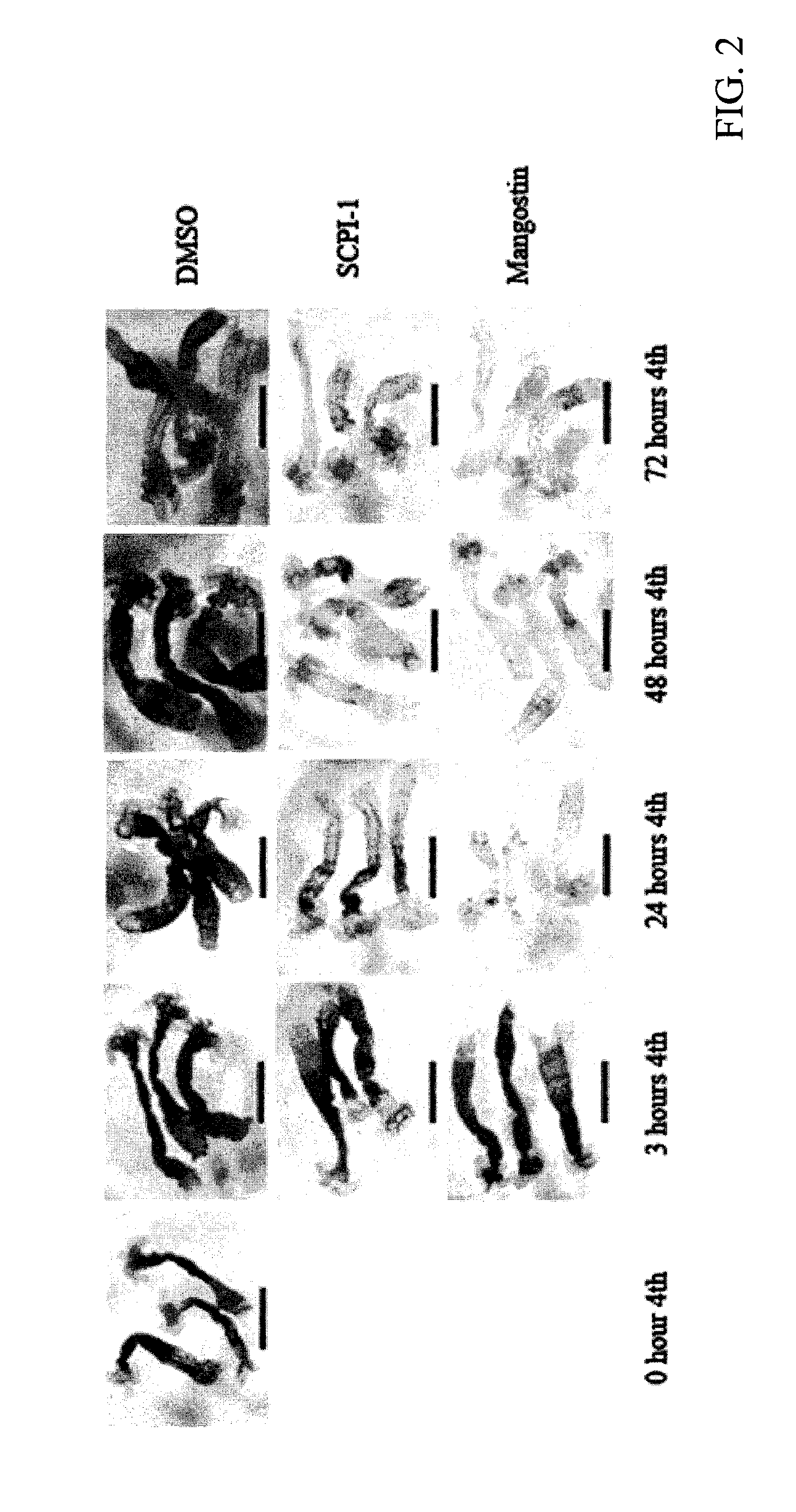Use of alpha-mangostin as a mosquito larvicide
a technology of alpha-mangostin and mosquito larvicide, which is applied in the field of use of alpha-mangostin as a mosquito larvicide, can solve the problems of affecting animals and/or humans, affecting the viability of shells, and most insecticides can be a threat to health and/or the environmen
- Summary
- Abstract
- Description
- Claims
- Application Information
AI Technical Summary
Benefits of technology
Problems solved by technology
Method used
Image
Examples
example 1
[0032]At 0.1 mM concentration, α-mangostin decreased NBD-cholesterol binding to AeSCP-2 by 23-29%. As shown in FIG. 1, data generated from in vitro competition binding assays demonstrate that the IC50 of α-mangostin is 0.2 μM, which is lower than that of SCPI-1. Specifically, FIG. 1 illustrates the inhibitory effect of α-mangostin on NBD-cholesterol binding to recombinant AeSCP-2. RFU=relative NBD-cholesterol fluorescent unit normalized with NBD-cholesterol background readings. The assays that were used included 5 μM NBD-cholesterol+5 uM AeSCP-2+increasing concentrations of α-mangostin in 10 uM potassium phosphate buffer (pH 7.4).
[0033]Biological activities of α-mangostin were examined in mosquito larvae. As shown in Table 1, α-mangostin is a potent mosquito larvicide that has lower LD50 than SCPI-1. α-Mangostin outperformed SCPI-1 (a synthetic compound) in both the 1st and 4th larval stages, which indicates that α-mangostin is an unexpectedly superior and significantly more potent ...
PUM
| Property | Measurement | Unit |
|---|---|---|
| pH | aaaaa | aaaaa |
| chemical | aaaaa | aaaaa |
| thickness | aaaaa | aaaaa |
Abstract
Description
Claims
Application Information
 Login to View More
Login to View More - R&D
- Intellectual Property
- Life Sciences
- Materials
- Tech Scout
- Unparalleled Data Quality
- Higher Quality Content
- 60% Fewer Hallucinations
Browse by: Latest US Patents, China's latest patents, Technical Efficacy Thesaurus, Application Domain, Technology Topic, Popular Technical Reports.
© 2025 PatSnap. All rights reserved.Legal|Privacy policy|Modern Slavery Act Transparency Statement|Sitemap|About US| Contact US: help@patsnap.com



